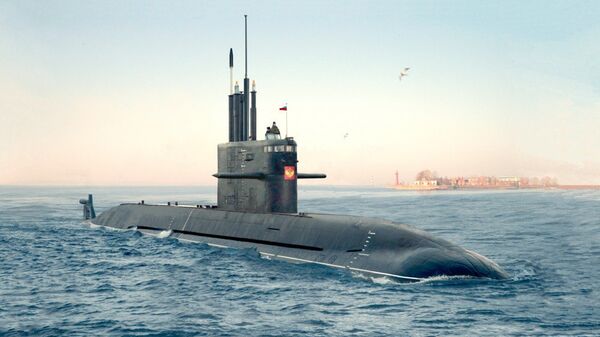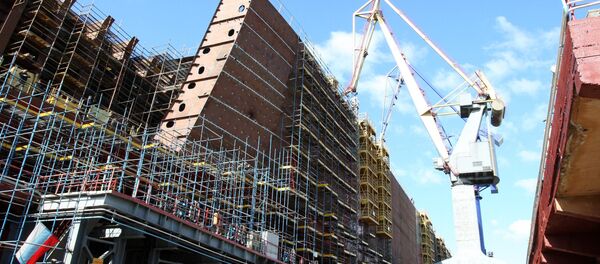ST. PETERSBURG (Sputnik) — The lead vessel of the Project 677, the Sankt Peterburg, is on a trial run with the Northern Fleet, while two others, the Kronstadt and the Velikie Luki, are being built.
"We are expecting the [next two vessels] to appear in the State Armaments Program and to be able to sign contracts on these two submarines in the next year," Buzakov said.
"The arguments over what engine should be installed will soon stop, I think. It will be either a diesel-electric system or air-independent propulsion, provided that this system has passed the tests. Only then will the fleet and the Ministry of Defense make the decision on the construction of next submarines. At the moment, the process is ongoing, our project engineers, Central Design Bureau for Marine Engineering 'Rubin,' are working on this," Buzakov said.
"They definitely will not have air-independent propulsion. That may be tested on some of the next vessels of this project," the company's CEO said.
Project 677 submarines are about 220 feet long, 23 feet wide, and can submerge to the depth of 985 feet. They are equipped with six torpedo tubes and carry a crew of 35 people. These submarines' top submerged speed is 21 knots.
The chief advantage of the air-independent propulsion is increased stealth capability. A submarine equipped with this system may stay underwater without having to go up to recharge batteries. The air-independent propulsion power plant developed in Russia is different from similar foreign systems in that the hydrogen is produced by reforming of diesel fuel.


